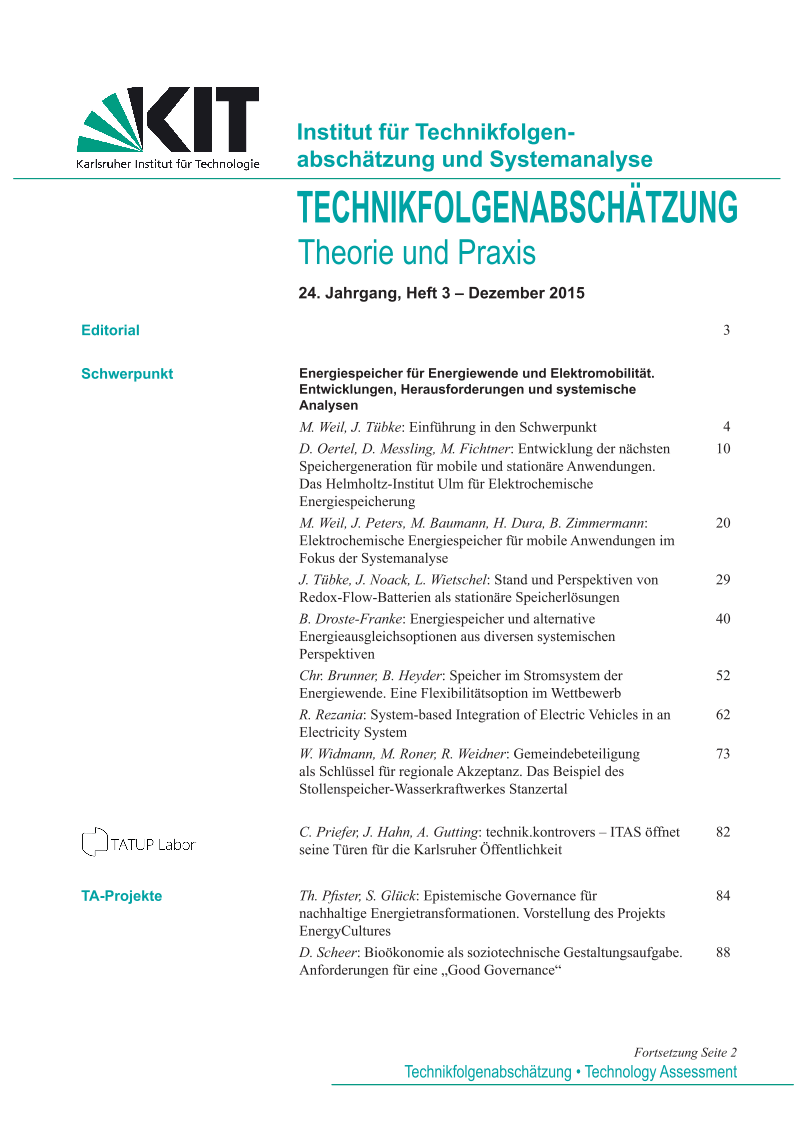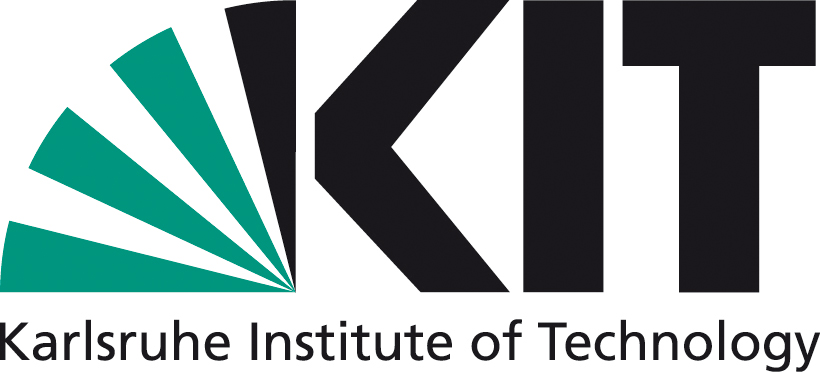Stand und Perspektiven von Redox-Flow-Batterien als stationäre Speicherlösungen
DOI:
https://doi.org/10.14512/tatup.24.3.29Keywords:
Energiespeicherung, Entwicklungsmodell, GND, Redox-AkkumulatorAbstract
Germany is emphatically pursuing the extension of renewable energy. For a safe and efficient energy supply the provision of energy, especially against the background of fluctuating input as well as the local and temporal use of energy has to be balanced. This is mainly done today by the power grids, yet these don’t have storage capacities to stabilize fluctuations. Electrochemical storage devices or batteries are among the established technologies for storage of electric energy and are versatilely used, such as for uninterruptible power sources. Storing electric energy with help of electrochemical storage devices in a higher Kilowatt (KWh) to Megawatt (MWh) scale cannot be installed economically today. This also has to do with the fact that the high storage costs increase almost proportionally to the installed capacity. This basic problem could be partly solved by the use of Redox-Flow-Batteries (RFB). In the following RFB are discussed according to their electrochemical properties and development potentials in order to give an assessment of potentials to reduce costs.Downloads
Published
01.11.2015
How to Cite
1.
Tübke J, Noack J, Wietschel L. Stand und Perspektiven von Redox-Flow-Batterien als stationäre Speicherlösungen. TATuP [Internet]. 2015 Nov. 1 [cited 2024 Apr. 19];24(3):29-40. Available from: https://www.tatup.de/index.php/tatup/article/view/444
Issue
Section
Articles








